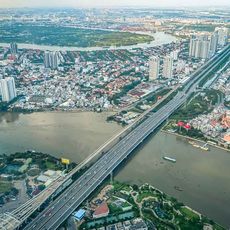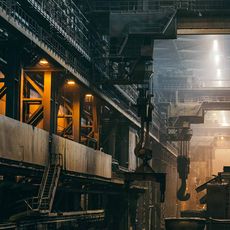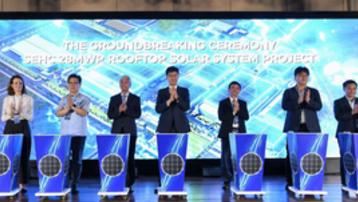The Outlook for Vietnam’s Construction Sector

Vietnam is one of the world’s economic success stories. Three decades of almost uninterrupted growth has improved lives and livelihoods, creating jobs and bringing investment into a range of industries.
One of the biggest beneficiaries of this has been the construction sector. Sustained economic growth requires significant long-term investment in infrastructure, housing, and logistics. It needs roads, ports, and warehouses to transport goods; factories to manufacture and assemble them; and residential real estate to house the millions of workers who produce them. None of this can happen without a construction sector able to provide the labour, materials, and technical know-how.
Now that Vietnam has graduated from a ‘developing’ to a ‘middle-income’ nation, private sector investment is replacing the official development assistance and foreign aid that funded major infrastructure projects in the past. This is creating opportunities for foreign and domestic investors not just in construction but in a range of related sectors from architecture to engineering and from raw materials to interior design.
Strong fundamentals driving strong growth
The last 12 months have seen positive growth in the construction sector, following an enforced hiatus during the pandemic when social distancing regulations put a lot of major infrastructure projects on hold. The General Statistics Office (GSO) of Vietnam reported an 8.5 percent real-terms growth in the construction sector in 2022, with investment in renewables and transport infrastructure driving this trend.
The GSO predicts that, between 2023 and 2026, the construction sector will see an average annual growth rate of eight percent, reaching a value of almost USD 100 billion, thanks to the government’s determination to develop road, rail, and power networks as well as to build more affordable housing projects.

The demographic and socio-economic fundamentals that fueled Vietnam’s growth over the last few decades remain just as important in 2023. The population will continue to grow and gravitate towards urban areas. The urbanization rate is set to reach at least 45 percent in 2030, rising to 50 percent in 2050, as job opportunities create a magnet for migration. This will require building an annual 70 million square feet of additional housing.
Meanwhile, greater international trade flows and strong economic growth will increase the need to invest in major public projects and improve local infrastructure such as road, rail, air, and sea transport.
Challenges and opportunities in construction
Vietnam has a range of major infrastructure works in the pipeline. For instance, the government’s new road development plan, issued in 2021, aims to create almost 5,000 km of expressways, 172 national highway routes, and 3,000 km of coastal roads between now and 2030. Meanwhile, the government has now approved the long-awaited Power Development Plan 8. This masterplan envisages increased capacities in wind, solar, and other renewables – all of which will require further investment in and upgrades of infrastructure.
In Hanoi, the People’s Council has just approved a USD 350-million project to build a bridge over the Red River, set to be completed in 2027. The capital also plans to spend USD 18 billion on housing developments during the first half of this decade. Meanwhile, in the south of Vietnam, Ca Mau province continues to invite investment into renewables and sustainable development, with the People’s Committee issuing directives to focus on developing wind, solar, and biomass projects. Likewise, HCMC continues to see significant investment in infrastructure, including in major road, waste management, and transport projects, such as the 200 km HCMC ring road.

However, it is not all plain sailing for the construction sector. The high prices of materials is increasing pressure on profit margins, with the cost of steel and sand, in particular, continuing to rise. This is making some companies hesitant to invest in or complete large-scale construction projects, because if steel prices keep rising, their costs will spiral. For this reason, business registration data shows a 22 percent annual rise in the number of construction companies suspending their operations.
Likewise, legislation continues to present some barriers to market development. For this reason, changes are in the pipeline which could have a positive impact on the construction sector. For instance, the public consultation on the new draft Land Law received around eight thousand comments, according to the Ministry of Natural Resources and Environment (MONRE). This draft law aims to tackle issues ranging from land lease to land acquisition and compensation – some of the biggest bottlenecks for developers in major construction projects.
Closing the funding gap

Vietnam spends around six percent of its GDP on infrastructure, around three times the regional average. This shows a clear ambition to bridge the gap with its nearest neighbors and closest competitors and maintain its record of sustained economic growth.
However, the government is unable to meet the multi-billion dollar costs of these infrastructure improvements on its own – estimated at an annual USD 30 billion. Vietnam needs private capital and foreign investment to make up the deficit. Bearing in mind the essential role that construction has in public infrastructure projects, this opens the door for French enterprises and investors.
This article is part of CCIFV magazine "Connect #11: Building Vietnam's Tomorrow: Challenges and trends in Construction"

Keep up to date with the latest news from the construction sector
Join CCIFV's construction sector committee to exchange ideas with our business community and access the most relevant information.
Learn more

